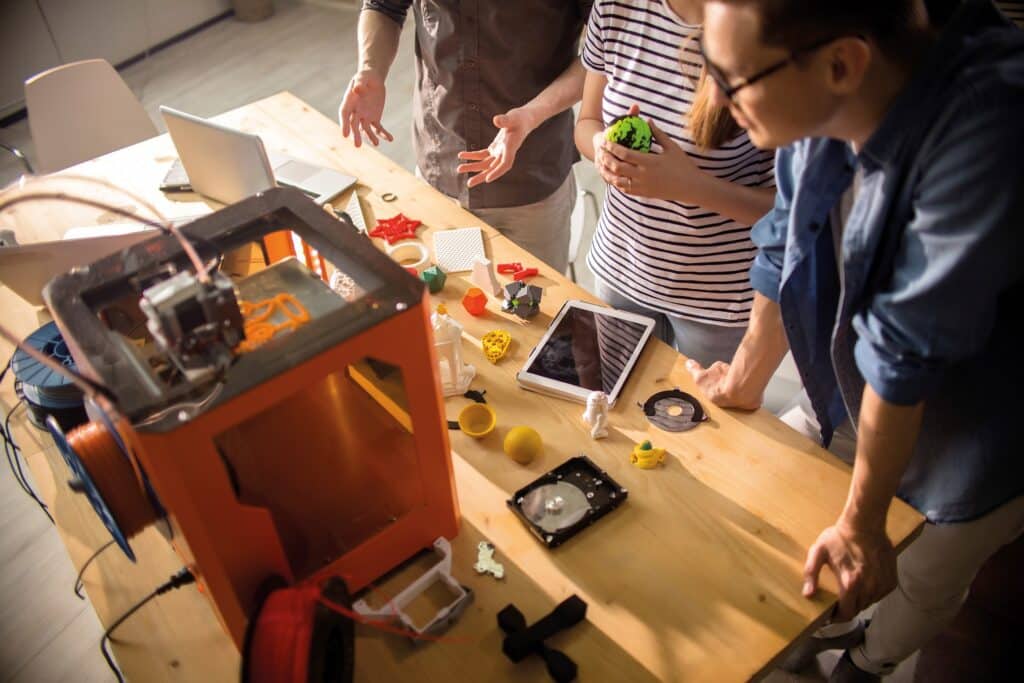“We urgently need more engineers and it is essential to encourage more women to enter engineering.” This categorical statement, made by James Dyson (founder of the popular technology company Dyson), perfectly illustrates the two major problems facing the labor market today —and two of the main challenges of education—: On the one hand, the need for companies to cover qualified ICT profiles and, on the other, the scarcity of women in this type of job. The reality is that technology companies currently have real difficulties in finding young talent that contributes new ideas when working with big trends such as Big Data, Artificial Intelligence or the Internet of Things (IoT). But it is not only about needing workers with technical knowledge, but companies are looking for something more. “In addition, they must be flexible profiles, who know how to work in complex organizations, with teams led by several people, who work on different projects in parallel and remotely,” said Juan Diaz-Andreu García, Client Partner and Head Hunter of the consulting firm Alexander Hughes Iberia , at the DES-Digital Enterprise Show 2022. These skills, along with problem solving or teamwork, will be essential for the jobs of the future; jobs for which today’s boys and girls must be prepared.
The key: STEAM
To acquire them, it is vital to focus on their training from an early age. And it is at this point where STEAM education enters the scene, understood not as an acronym for Science, Technology, Engineering, Art and Mathematics, but as an approach to these subjects in a transversal way, which encourages the student to acquire a broad perspective and interconnected of its formation. The STEAM approach means that students are able to develop skills such as creativity, critical thinking, problem solving and challenges, logical thinking, emotional intelligence, leadership skills, empathy, autonomy…
As the study ‘Radiography of the gender gap in STEAM training’ prepared by the Ministry of Education and Vocational Training recalls, STEAM disciplines are also the basis that supports the 2030 Agenda for Sustainable Development and UNESCO education , and training in these fields can provide those who study them with the knowledge, skills, attitudes and behaviors necessary to create inclusive and sustainable societies, putting science and technology at the service of the progress of societies. “Some authors specify that an authentic educational STEAM project is one that is carried out around one of these three themes: sustainability, economy and health. Scientific inquiry and project methodology familiarizes students with the approach to humanity’s problems related to these axes and, therefore, contributes to creating awareness, sensitivity and commitment to these challenges”, explains Fernando Posada, ICT teacher and coordinator at CEIP Costa Teguise in Lanzarote. To guarantee a successful application of STEAM in the classroom, it is necessary to resort to methodologies that facilitate the active participation of students in their own training: Service Learning, Project-Based Learning, Challenge-Based Learning… The other necessary condition is the promotion of learning competence; something closely related to the new curriculum proposed by the LOMLOE. “It actually represents a change for those teachers who work in a more traditional way, where the subjects are not related to other areas, but not for those who already use methodologies such as Project-Based Learning, gamification, etc,” he says. Yolanda Martínez Laserna, director of IBSTEAM, the technical and teaching center of the General Directorate for Early Childhood, Innovation and the Educational Community of the Ministry of Education and Vocational Training of the Balearic Islands.
And the girls?
How does STEAM education help bridge the gender gap? Its integrating perspective makes it possible to work from an early age to dilute the division between science and letters and, even more, between male and female subjects or careers.
Read more in the print magazine
To read this report in its entirety, published in No. 47 of the printed magazine, you need to subscribe. Do it with a 20% discount until September 20 in our online store.

